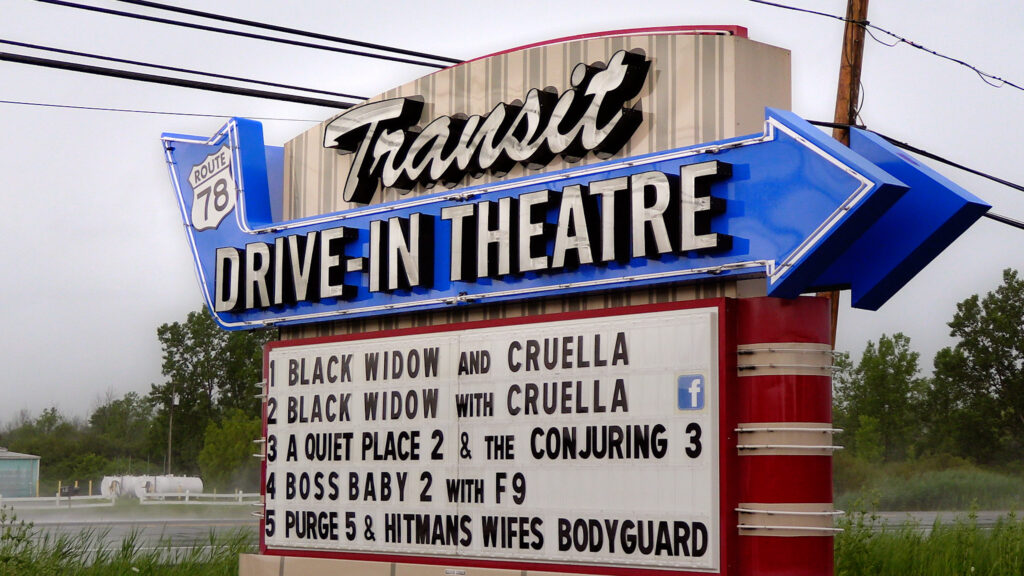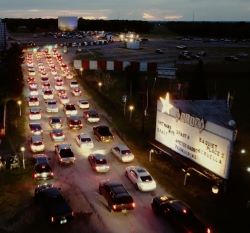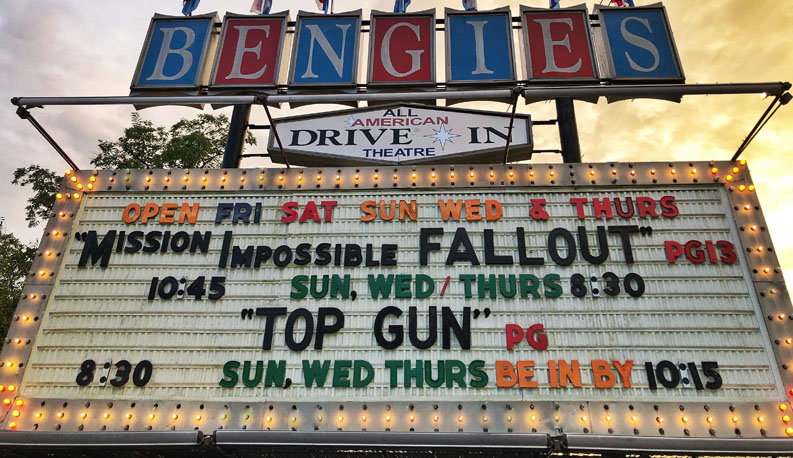
Full-length documentary “Back to the Drive-In” shines the spotlight on owners of drive-in cinemas, who are mostly hardscrabble mom-and-pop locals, in stark contrast to “hardtop” theaters dominated by international chains.
“Back to the Drive-In,” which premiered via video-on-demand earlier this year, takes a loving look at outdoor cinemas and their idiosyncratic operators; they kept movie-going alive during the pandemic shutdown when indoor theaters closed.
“Two or three hours from now, the first people start showing up,” says Rod Sanders, owner of Field of Dreams Drive-In near Toledo, Ohio. “When the kids get out of the car and look around, it puts a smile on their faces. They get the Frisbee or football out and start throwing it around [in daylight before movies start], you can’t put a price on that. You can’t really explain that feeling. That’s the best part.”
The one hour, 44-minute documentary jumps between 11 drive-ins scattered across the U.S. to tell the story behind the business, interviewing before the gates open. Frequent use of aerial images gives a gorgeous bird’s-eye view of outdoor movie theaters, whether located in corn fields or palm groves.

None of the 11 drive-in owners seems to be in business just for the money, and indeed there are worries about economic viability.
D. Edward Vogel, owner of Bengies Drive-In near Baltimore, says he used to relish going to work for the unexpected challenges, but over his 34 years became weary instead wondering what will break today or how he will work around employees who don’t show up. But there’s still a joy at twilight when dark cinema screens come to life. “That part never gets old,” Vogel says.
Owners and employees interviewed talk about having worked 10, 20, or 30 years at the same drive-in.
Jennifer Karls is an architect who owns the Quasar Drive-In in Valley, Neb., with her husband, Jeff. Her passion to design a retro 1950s facility was almost an obsession. “I took aerial shots of over 50 drive ins for how they were laid out, how close to the highway and their queuing distances,” says Karls. “We spent two years [examining] every little thing”
The Greenville Drive-In located in New York’s Catskills region has a full cocktail bar, a service that would surprise patrons elsewhere. Owner Dwight Grimm revels working the bar as the “chief mixologist”; consumption is restricted to the licensed “garden area.”
The documentary shows the people and the drive-ins are a slice of Americana. The Harvest Moon Drive-In located in central Illinois begins its movie night playing a video recording of the national anthem.
It’s a hardscrabble business that “Back To the Drive-In” presents warts and all.
Customers steal toilet paper and sometimes vandalize. Brad Smith, manager of the Coyote Drive-In near Fort Worth, Texas, says that instances of customer misconduct are on the upswing since the pandemic (implying people suffering from being cooped up). “I’ve had rocks thrown at me,” said Smith. “I’ve had my life threatened. I’ve been chased. We’ve had people urinating in the pavilion. It was very embarrassing.” Coyote employees now wear bodycams to document interactions.

In the post-pandemic era, keeping employees is difficult, say drive-in owners. The facilities demand constant grounds maintenance, as well as equipment that includes signage, food service and projectors.
And the business is at the mercy of the weather. Drive-ins might get 100-600 cars depending on size of one to four movie screens. Threat of rain or fog on a Friday or Saturday will ruin a peak movie night.
Most operators said that business hasn’t full returned to the pre-pandemic normal, which is a worry. Another worry is whether Hollywood will keep supplying movies. The interviews are from 2021 and 2022, but since then Hollywood signaled it supports the cinema window for its economic benefit. So, expect movies to keep flowing to drive-ins and regular theaters led by multinationals AMC Entertainment and Regal Cinemas, which is owned by UK-based Cineworld.
While “Back to the Drive-In” presents mostly one-location operators, the documentary references some that have multiple locations in a regional cluster.
An economic boon of drive-ins is alluded to that owners can hit the jackpot selling their expanses of land for business parks, shopping centers and homes.
One of the 11 featured drive-in theater owners acknowledges his business will close because he sold the underlying property to a real estate developer that will build a tech-centric business park. “They paid us a substantial amount of money,” the drive-in owner says. “More money than we could make operating the drive-in in 25 years.”
“Back to the Drive-In” was directed and written by April Wright, whose credits include documentaries going behind-the-scenes of the film business such as stuntwomen. She is based in Los Angeles and also made 2013 cinema documentary “Going Attractions: The Definitive Story of the American Drive-In Movie.”
The documentary is distributed by Florida-based Uncork’d Entertainment, whose releases include horror, LGBTQ+ releases and other documentaries.
Trade group the United Drive-In Theatre Owners Association counts 302 drive-in locations in the Untied States with 533 screens as of November 2022. The count declined over the decades, though it had showed signs of bottoming before the pandemic. The closing credits of “Back to the Drive-In” presents some places where drive-ins are slated to open.
Related content:
Leave a Reply